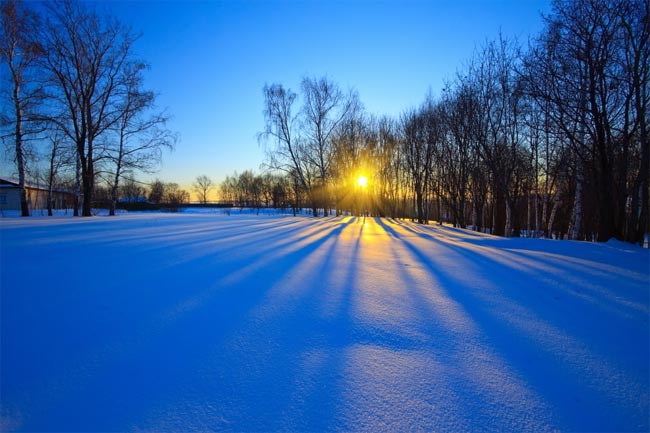Winter Solstice: Crazy Ways We Mark Shortest Day

In Fairbanks, Alaska, it's possible for office workers without a window view to never see the sun during December — except for weekends.
As the month with the shortest days of the year, the sun rises and sets in December while most people sit at their desks.
That's why residents go all out to mark the winter solstice, when the days shift from losing sunlight to gaining sunlight. This year, the town even funded its own fireworks display through Kickstarter. (Fireworks are better enjoyed during the winter darkness than in July's bright summer nights.)
Celebrating the shortest day of the year is a ritual that dates back thousands of years. Stonehenge appears laid out in alignment with the winter solstice sunset, and Newgrange in Ireland, a prehistoric tomb, opens to the winter solstice sunrise.
At the December solstice, the Earth's tilted axis aims the Northern Hemisphere away from the sun. The solstice is a point in time when the Northern Hemisphere is at its farthest tilt, precisely 11:11 UTC, or 6:12 a.m. ET today (Dec. 21).
High-latitude cultures around the world marked the passing with festivals, feasts and tales of gods and ghosts rising from darkness. Some of the rituals have passed into history. The pagan Slavic holiday of Korochun, celebrated on winter solstice, was more like Halloween: Evil spirits were at their most powerful on this night, until the new sun was resurrected and defeated them. Others remain with us today, in full or in bits and pieces. Here are some examples:
- The Germanic culture that dominated most of northern Europe gave us the word yule, and the tradition of burning a yule log to ward off evil spirits.
- The Roman feast of Saturnalia was a week-long winter solstice party that overturned social norms, including masters served slaves. Some of the customs, such as gift-giving, may have influenced Christmas traditions.
- The Persian solstice celebration of Yalda traces back hundreds of years, and is commemorated by serving fresh fruit, especially watermelon and family parties.
- In China, the Dong Zhi festival is second only to the Chinese New Year. The festival links yin and yang, the qualities of light and dark or cold and warmth (among others) to the waxing and waning of the sun's light.
- In Nordic countries, St. Lucia's or St. Lucy's Day, celebrated on Dec. 13, may combine a pagan ritual called Lussinatta with the more recent ceremony, which involves young girls wearing a crown of candles on their heads.
But in modern times, people living in northern countries are more likely to acknowledge the transition with a soak in the outdoor hot tub or a "fun run" in freezing temperatures.
Sign up for the Live Science daily newsletter now
Get the world’s most fascinating discoveries delivered straight to your inbox.
Or you can celebrate like they do in the Land of the Midnight Sun (with a nod to the rumored Mayan Apocalypse), and rock out at a combined winter solstice and end-of-the-world party. Cover's only $5, and doors open at 9 p.m. at the Blue Loon, "cultural epicenter" of Fairbanks.
Reach Becky Oskin at boskin@techmedianetwork.com. Follow her on Twitter @beckyoskin. Follow LiveScience on Twitter @livescience. We're also on Facebook & Google+.










